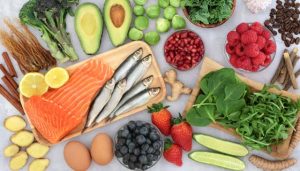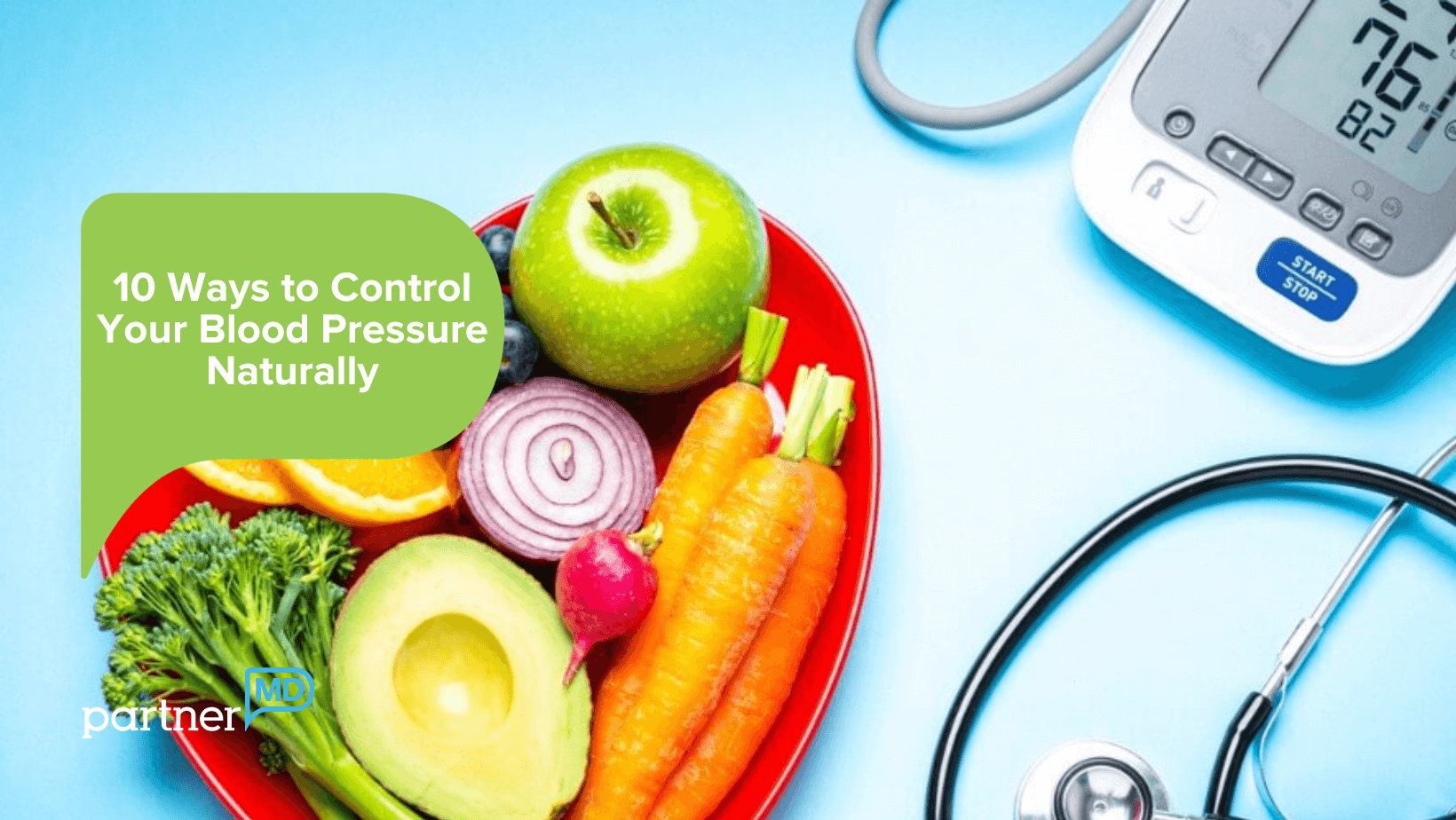
Superfoods That Can Transform Your Health: A Comprehensive Guide
Superfoods : In today’s fast-paced world, maintaining optimal health is more important than ever. One of the most effective ways to boost your well-being is by incorporating superfoods into your diet. Superfoods are nutrient-rich powerhouses that provide a myriad of health benefits, from boosting immunity to improving mental clarity. This detailed guide explores some of the most potent superfoods, their nutritional profiles, and how they can transform your health.
1. Blueberries: The Antioxidant Powerhouse
Nutritional Profile:
- High in Vitamin C, Vitamin K, and Fiber
- Packed with antioxidants, particularly anthocyanins
Health Benefits:
- Anti-Aging and Skin Health: The high antioxidant content helps combat oxidative stress, slowing down the aging process.
- Brain Function: Studies suggest that regular consumption improves memory and cognitive function.
- Heart Health: Reduces LDL cholesterol levels and regulates blood pressure.
How to Include in Your Diet:
- Add to smoothies, yogurt, or oatmeal.
- Use as a topping for salads or desserts.
- Snack on them fresh or dried.
2. Spinach: The Nutrient-Dense Leafy Green
Nutritional Profile:
- High in Vitamin A, Vitamin C, Vitamin K, Folate, and Iron
- Contains powerful antioxidants like lutein and zeaxanthin
Health Benefits:
- Eye Health: Lutein and zeaxanthin improve vision and protect against cataracts.
- Bone Health: High Vitamin K content strengthens bones.
- Blood Pressure Regulation: Rich in nitrates, which promote cardiovascular health.
How to Include in Your Diet:
- Use in salads, soups, and smoothies.
- Sauté with garlic as a side dish.
- Add to omelets or pasta dishes.
3. Chia Seeds: The Omega-3 Rich Seed
Nutritional Profile:
- Excellent source of Omega-3 fatty acids, Fiber, and Protein
- Rich in Calcium, Magnesium, and Antioxidants
Health Benefits:
- Digestive Health: High fiber content aids digestion and promotes gut health.
- Heart Health: Omega-3s reduce inflammation and lower cholesterol.
- Weight Management: Expands in the stomach, promoting satiety and reducing appetite.
How to Include in Your Diet:
- Mix into yogurt or oatmeal.
- Add to smoothies for a nutrient boost.
- Make chia pudding by soaking in almond milk overnight.
4. Turmeric: The Anti-Inflammatory Spice
Nutritional Profile:
- High in Curcumin, a potent anti-inflammatory compound
- Contains Manganese, Iron, and Vitamin B6
Health Benefits:
- Anti-Inflammatory Properties: Curcumin reduces inflammation and joint pain.
- Brain Function: Enhances cognitive function and lowers the risk of brain diseases.
- Cancer Prevention: Anti-carcinogenic properties help reduce the growth of cancerous cells.
How to Include in Your Diet:
- Add to curries, soups, and stews.
- Make turmeric tea or golden milk.
- Sprinkle over roasted vegetables or eggs.
5. Greek Yogurt: The Protein-Rich Probiotic
Nutritional Profile:
- High in Protein and Probiotics
- Good source of Calcium and Vitamin B12
Health Benefits:
- Gut Health: Probiotics improve digestion and boost immunity.
- Bone Health: High calcium content strengthens bones.
- Muscle Recovery: Protein aids in muscle repair and growth.
How to Include in Your Diet:
- Use as a base for smoothies.
- Add to breakfast bowls with fruits and nuts.
- Substitute for sour cream in recipes.
6. Quinoa: The Complete Protein Grain
Nutritional Profile:
- High in Protein, Fiber, and Essential Amino Acids
- Packed with Iron, Magnesium, and B-Vitamins
Health Benefits:
- Muscle Growth and Repair: Complete protein source with all essential amino acids.
- Energy Boost: High in complex carbohydrates for sustained energy.
- Gluten-Free Alternative: Safe for those with gluten sensitivities.
How to Include in Your Diet:
- Use as a base for salads.
- Replace rice or pasta with quinoa.
- Add to soups or as a side dish.
7. Dark Chocolate: The Heart-Healthy Treat
Nutritional Profile:
- High in Antioxidants, particularly flavonoids
- Contains Magnesium, Iron, and Zinc
Health Benefits:
- Heart Health: Flavonoids improve circulation and lower blood pressure.
- Mood Enhancement: Increases serotonin and endorphin levels.
- Skin Protection: Antioxidants protect against UV rays and improve skin texture.
How to Include in Your Diet:
- Enjoy as a small snack.
- Add to smoothies or oatmeal.
- Use in baking or as a topping for yogurt.
8. Avocado: The Healthy Fat Fruit
Nutritional Profile:
- Rich in Monounsaturated Fats, Fiber, and Potassium
- High in Vitamins C, E, K, and B6
Health Benefits:
- Heart Health: Monounsaturated fats improve cholesterol levels.
- Weight Management: Promotes satiety and helps control appetite.
- Skin and Hair Health: Vitamin E nourishes skin and strengthens hair.
How to Include in Your Diet:
- Use as a spread on toast.
- Add to salads, sandwiches, or smoothies.
- Make guacamole or use as a topping for tacos.
9. Salmon: The Omega-3 Rich Fish
Nutritional Profile:
- High in Omega-3 Fatty Acids and Protein
- Rich in Vitamin D, B12, and Selenium
Health Benefits:
- Brain Health: Omega-3s improve cognitive function and memory.
- Heart Health: Reduces triglycerides and lowers blood pressure.
- Anti-Inflammatory Properties: Alleviates joint pain and inflammation.
How to Include in Your Diet:
- Grill, bake, or steam for a nutritious main dish.
- Add to salads, sandwiches, or wraps.
- Use in sushi or as smoked salmon.
10. Nuts and Seeds: Nutrient-Dense Snacks
Examples: Almonds, Walnuts, Flaxseeds, Sunflower Seeds
Nutritional Profile:
- High in Healthy Fats, Fiber, and Protein
- Rich in Vitamin E, Magnesium, and Antioxidants
Health Benefits:
- Heart Health: Reduces cholesterol and inflammation.
- Brain Function: Omega-3s enhance cognitive performance.
- Weight Management: High fiber content promotes satiety.
How to Include in Your Diet:
- Snack on a handful of mixed nuts.
- Add to salads, oatmeal, or yogurt.
- Blend into smoothies or use in baking.
11. Broccoli: The Cancer-Fighting Cruciferous Vegetable
Nutritional Profile:
- High in Vitamins C, K, and A
- Rich in Fiber, Folate, and Potassium
- Contains Sulforaphane, a powerful antioxidant
Health Benefits:
- Cancer Prevention: Sulforaphane may help prevent certain types of cancer by neutralizing carcinogens.
- Detoxification: Supports liver detoxification due to its high antioxidant content.
- Heart Health: Lowers cholesterol levels and improves blood vessel function.
- Bone Health: High Vitamin K and Calcium content strengthen bones.
How to Include in Your Diet:
- Steam or roast as a side dish.
- Add to salads, stir-fries, or pasta dishes.
- Blend into smoothies for an extra nutrient boost.
12. Sweet Potatoes: The Vitamin A Powerhouse
Nutritional Profile:
- High in Beta-Carotene (Vitamin A), Vitamin C, and Fiber
- Contains Potassium, Manganese, and B Vitamins
Health Benefits:
- Vision Health: Beta-carotene improves vision and prevents night blindness.
- Immune Support: Vitamin C boosts immunity and promotes collagen production.
- Digestive Health: High fiber content supports digestive health.
- Blood Sugar Regulation: Low glycemic index helps maintain steady blood sugar levels.
How to Include in Your Diet:
- Bake, mash, or roast as a side dish.
- Use as a base for healthy bowls or salads.
- Make sweet potato fries or chips as a snack.
13. Garlic: The Immunity-Boosting Bulb
Nutritional Profile:
- Contains Allicin, a powerful anti-inflammatory compound
- High in Vitamins C and B6, Manganese, and Selenium
Health Benefits:
- Immune Boosting: Allicin enhances immune function and fights infections.
- Heart Health: Lowers blood pressure and reduces cholesterol levels.
- Anti-Cancer Properties: Compounds in garlic may reduce the risk of certain cancers.
- Detoxification: Promotes liver function and detoxifies heavy metals.
How to Include in Your Diet:
- Use as a base for sauces, soups, and stews.
- Add to salad dressings or marinades.
- Roast and spread on whole-grain toast.
14. Green Tea: The Metabolism-Boosting Beverage
Nutritional Profile:
- Rich in Antioxidants (Catechins), particularly EGCG
- Contains L-Theanine, which promotes relaxation
Health Benefits:
- Weight Loss: Boosts metabolism and promotes fat burning.
- Brain Function: L-Theanine improves focus and cognitive function.
- Heart Health: Lowers LDL cholesterol and reduces the risk of stroke.
- Anti-Cancer Properties: Catechins help prevent cell damage and reduce cancer risk.
How to Include in Your Diet:
- Drink as a hot or iced beverage.
- Use in smoothies or as a base for matcha lattes.
- Add to desserts or baking recipes.
15. Beetroot: The Blood Pressure Regulator
Nutritional Profile:
- High in Nitrates, Folate, and Vitamin C
- Contains Betalains, which have anti-inflammatory properties
Health Benefits:
- Blood Pressure Regulation: Nitrates improve blood flow and lower blood pressure.
- Exercise Performance: Increases stamina and oxygen use during workouts.
- Liver Detoxification: Betalains support liver function and detoxification.
- Anti-Inflammatory Properties: Reduces inflammation and oxidative stress.
How to Include in Your Diet:
- Juice for a nutrient-packed drink.
- Roast as a side dish or add to salads.
- Blend into smoothies or soups.
16. Mushrooms: The Immune System Booster
Examples: Shiitake, Reishi, Maitake, and Lion’s Mane
Nutritional Profile:
- Rich in Vitamin D, B Vitamins, and Selenium
- Contains Beta-Glucans, which enhance immunity
Health Benefits:
- Immune Support: Beta-glucans activate immune cells.
- Brain Health: Lion’s Mane improves cognitive function and memory.
- Anti-Cancer Properties: Polysaccharides inhibit tumor growth.
- Anti-Inflammatory and Antiviral: Supports overall health and disease resistance.
How to Include in Your Diet:
- Add to soups, stews, and stir-fries.
- Use as a meat substitute in burgers or tacos.
- Make mushroom tea or use powdered forms in smoothies.
17. Pomegranate: The Heart-Healthy Fruit
Nutritional Profile:
- High in Polyphenols, Vitamin C, and Potassium
- Contains Punicalagins and Anthocyanins
Health Benefits:
- Heart Health: Reduces blood pressure and cholesterol.
- Anti-Inflammatory Properties: Lowers inflammation throughout the body.
- Cancer Prevention: Antioxidants inhibit cancer cell growth.
- Digestive Health: High fiber content improves digestion.
How to Include in Your Diet:
- Add seeds to salads, yogurt, or desserts.
- Drink fresh pomegranate juice.
- Use in marinades or sauces for meats.
18. Seaweed: The Nutrient-Rich Marine Vegetable
Examples: Nori, Wakame, and Spirulina
Nutritional Profile:
- High in Iodine, Omega-3 Fatty Acids, and Antioxidants
- Contains Vitamins A, C, E, and K, and B Vitamins
Health Benefits:
- Thyroid Health: High iodine content supports thyroid function.
- Anti-Inflammatory Properties: Reduces inflammation and oxidative stress.

- Heart Health: Omega-3s improve cholesterol levels.
- Detoxification: Binds to heavy metals and detoxifies the body.
How to Include in Your Diet:
- Use nori sheets for sushi or snacks.
- Add wakame to soups or salads.
- Use spirulina powder in smoothies or energy bars.
19. Goji Berries: The Longevity Fruit
Nutritional Profile:
- High in Vitamin C, Vitamin A, and Fiber
- Rich in Antioxidants, especially Zeaxanthin
Health Benefits:
- Eye Health: Zeaxanthin protects against macular degeneration.
- Immune Support: Boosts immunity with high Vitamin C content.
- Skin Health: Promotes collagen production and reduces aging signs.
- Energy and Mood Enhancement: Improves energy levels and mood.
How to Include in Your Diet:
- Add to cereals, yogurt, or smoothies.
- Use in trail mixes or as a snack.
- Brew as goji berry tea.
20. Lentils: The Plant-Based Protein Powerhouse
Nutritional Profile:
- High in Protein, Fiber, Iron, and Folate

- Rich in Polyphenols and Antioxidants
Health Benefits:
- Heart Health: Lowers cholesterol and blood pressure.
- Digestive Health: High fiber content improves digestion.
- Blood Sugar Regulation: Stabilizes blood sugar levels.
- Muscle Growth and Repair: Excellent plant-based protein source.
How to Include in Your Diet:
- Use in soups, stews, and curries.
- Add to salads or use as a base for veggie burgers.
- Make lentil hummus or dips.



 DailyMediCure
DailyMediCure 









